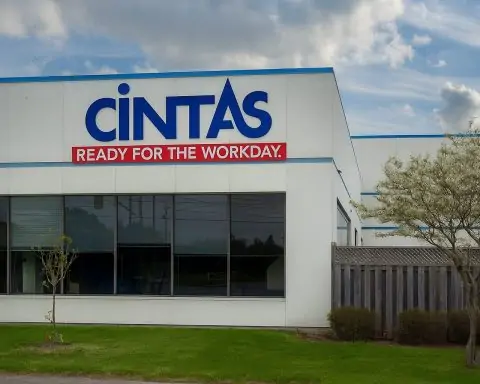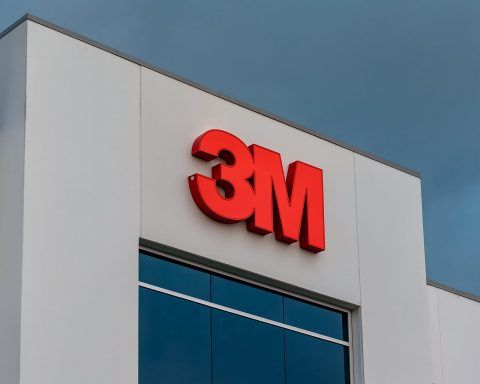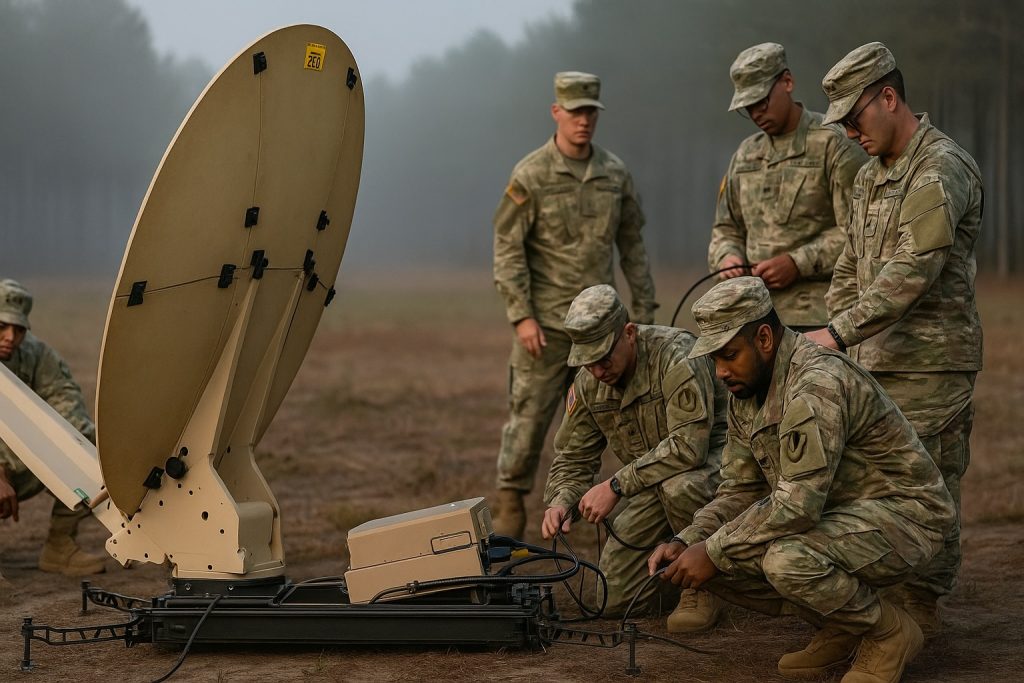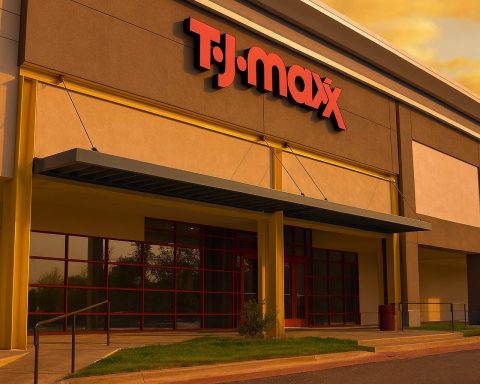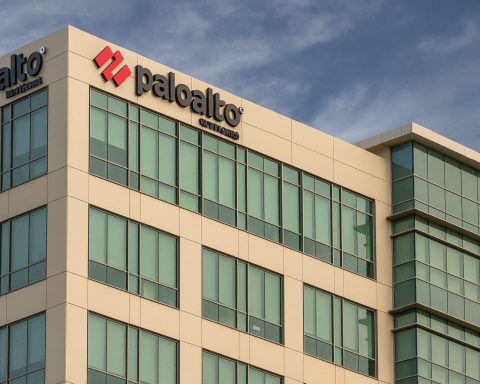- By March 2025, Lviv’s primary market apartments averaged $1,330 per square meter, the highest in Ukraine, up 1.5% year-on-year and up 66% since March 2021.
- In the secondary market, the average asking price for a one-bedroom resale apartment in Lviv is about $65,000, slightly higher than Kyiv’s about $63,000.
- As of March 2025, average rents for a one-bedroom in Lviv are around ₴16,700 per month (~$403), up about 10% year on year, with two-bedroom units rising roughly 16%.
- Lviv’s gross residential yield was around 7.6% in early 2025, higher than many markets and the national average of about 7.4% (Kyiv’s yield was about 8.1%).
- Office real estate in Lviv Oblast trades at about $1,450 per square meter in early 2025, second only to Kyiv’s ~$2,210/m2, with 2024 prices up about 7%.
- By Q1 2025, office rents in Lviv average around $10–11 per m2 per month, with premium small-format spaces about $11.5/m2 and vacancy tightening.
- The M10 Lviv Industrial Park opened in May 2024 as a 14,400 m2 Class A warehouse complex, fully pre-leased in its first phase to Aurora, with plans to expand to 140,000 m2, and Dragon Capital investing over ₴400 million.
- In 2024, Ukraine delivered 987,000 m2 of new industrial/warehouse space, with the Lviv region accounting for about 19% of the national total (Kyiv 31%).
- Farmland in Lviv surged in 2024–2025: 2024 average agricultural land price in Ukraine was ₴46,678/ha ($1,100), January 2025 ₴48,622/ha ($1,150), and April 2025 ₴104,046/ha ($2,800), placing Lviv among the top five priciest regions; corporate buyers paid about ₴62,656/ha ($1,480).
- Policy shifts include farmland liberalization allowing corporate purchases in 2024, Prozorro.Sale land auctions with high rent bids, and the eOselya mortgage program issuing nearly 5,900 loans in 2023 totaling ₴8.85 billion at 3% interest.
Introduction: The real estate market in Lviv, Ukraine has undergone a remarkable transformation by 2025, buoyed by wartime migration and economic shifts. Located in western Ukraine, Lviv has emerged as a safe-haven market amid Russia’s invasion, attracting internally displaced people (IDPs), relocating businesses, and investors. Demand has surged across all property types – from housing and offices to industrial facilities and even land – driving prices upward despite broader economic challenges. This comprehensive report examines market trends, prices, demand/supply dynamics, rental yields, and forecasts for Lviv’s residential, commercial, industrial, and land sectors. We also analyze key factors influencing the market (economic, political, demographic) and highlight expert predictions for the next 3–5 years, along with notable new developments and policy changes shaping the city’s real estate landscape.
Residential Real Estate: Housing Demand Surges in a Safe Haven
Lviv’s residential property market has boomed as the city became a refuge for thousands of Ukrainians fleeing conflict zones. Housing demand in Lviv has increased multi-fold since 2022, leading to sharp rises in both sale prices and rents [1] [2]. “The security factor is driving up housing prices in regions where shelling is irregular… The result is an expensive West and a cheap East,” observes a housing review by Hromadske [3] [4]. With Lviv considered relatively safe and close to the EU, many families and businesses resettled here, underpinning a strong housing market even as overall buyer caution kept national demand around 75% of pre-war levels [5] [6].
Prices: Lviv is now one of Ukraine’s most expensive housing markets. In fact, as of early 2025, average apartment prices in Lviv have surpassed Kyiv in key segments. Data from real estate platform LUN shows Lviv’s primary market apartments averaging $1,330 per square meter (Mar 2025), the highest in the country [7] [8]. That marks a 1.5% year-on-year increase and an astonishing +66% surge since pre-war 2021 [9] [10]. In the secondary (resale) market, Lviv’s prices are also top-tier. Notably, the average asking price for a one-bedroom resale apartment in Lviv is about $65,000, slightly higher than in Kyiv ( ~$63,000 ) [11] [12]. Over 2024, one-room apartments in Lviv rose +12% in USD terms, whereas Kyiv saw a slight drop [13] [14]. Larger units followed a similar trend – e.g. Lviv’s three-room flats gained ~8% in value in 2024 as Kyiv’s declined [15] [16]. As a result, Lviv (along with Kyiv and newcomer Uzhhorod) now ranks among the priciest cities for housing in Ukraine [17] [18].
This surge is even more dramatic over the long term. Since March 2021, Lviv’s new-build apartment prices jumped about 66%, second only to Ivano-Frankivsk’s 98% leap among western cities [19]. The driving force is war-related migration: many people relocated from frontline regions to Lviv, pushing up demand and prices, while eastern markets collapsed. “In frontline cities, the war continues to depress value… In western regions, demand remains strong as many residents have stayed and have a longer planning horizon,” notes LUN analysts [20] [21].
Demand & Supply: Buyer demand for homes in Lviv remains robust but slightly tempered by economic uncertainty. Industry data indicate overall housing sale demand in 2024 was about 75% of 2021 levels as some buyers deferred purchases amid security risks [22] [23]. Nonetheless, Lviv saw an active market – both primary sales (often to IDPs or investors) and secondary transactions have been rising [24] [25]. Supply of new housing is constrained: few new projects launched in 2022–2023 due to the war. By late 2024, building activity resumed mostly in western regions. Lviv and its oblast saw the highest number of new residential buildings commissioned after Kyiv [26]. Even so, developers face challenges like high construction costs, labor shortages (many workers mobilized or emigrated), and war-related risks [27] [28]. The National Bank warns that “the pace of new housing supply [will] remain slow… ‘risks of a shortage of new high-quality housing remain’,” especially as few projects can start in hazard zones [29] [30]. In Lviv, this limited new supply against strong demand has kept the market tight – helping stabilize prices at high levels.
Rental Market & Yields: Lviv’s rental housing market has been exceptionally hot. The influx of displaced families and professionals drove rents up at double-digit rates. As of March 2025, average apartment rents in Lviv were just below Kyiv’s. A one-bedroom in Lviv rents for around ₴16,700 per month (≈$403), up ~10% year-on-year [31] [32]. Larger units saw even bigger jumps (~16% YoY for a 2-bedroom) amid competition for family-sized homes [33]. Demand is so strong that apartments now get snatched off the market quickly – in Kyiv the average listing was rented within 6 days (down from 11 days a year prior), and Lviv also saw shrinking vacancy durations [34] [35]. LUN experts confirm: “The rental market is currently the most resilient: demand remains strong, rental rates are climbing, and vacancy durations are shortening.” [36] [37].
[38] [39] Rental yields in Lviv have become attractive for investors. Nationwide, gross residential yields averaged ~7.4% in early 2025, and Lviv’s were around 7.6%, higher than many European markets [40] [41]. (By comparison, Kyiv’s rental yield was ~8.1%, and the war-affected Odesa and Kharkiv markets were much lower around 5-6% [42] [43].) These healthy yields – a byproduct of rising rents – are sparking investor interest in buy-to-let opportunities. Industry observers note that some would-be sellers are now holding and renting out property, and even developers are contemplating “ready-to-rent” apartment portfolios to tap the strong rental demand [44] [45]. One major developer, RIEL, estimates that combining rental income with price appreciation can yield 15–20% annual returns on Lviv residential investments in the current climate [46] [47]. Such high returns reflect both monthly cash-flow from rent and capital gains as property values climb.
Key Drivers: Multiple factors fuel Lviv’s housing boom. Security and Demographics are paramount – the war drove tens of thousands of people west. By early 2025, about 20% of Ukraine’s 3.7 million IDPs were living in western regions (Lviv, Ivano-Frankivsk, Zakarpattia) [48] [49], straining local housing supply. This population influx created urgent demand for apartments and rental homes. Economic factors also play a role: inflation (≈12% in 2024) and a weakening hryvnia raised construction and repair costs, pushing prices higher [50] [51]. Developers price new units largely in USD to hedge inflation, so the planned hryvnia devaluation to ~₴45/$1 in the 2025 state budget is expected to further raise hryvnia-denominated house prices [52]. On the financing side, Ukraine’s central bank slashed interest rates from 25% to 15.5% over 2023–2025, but mortgage lending remains nascent. However, a government-subsidized mortgage program “eOselya” (Ukrainian for “eHome”) has been a bright spot, stimulating some demand despite high war-era credit risk. Under eOselya, banks issued nearly 5,900 loans (₴8.85 billion) in 2023 at ultra-low 3% interest for eligible groups (military servicemembers, first responders, teachers, doctors, etc.) [53] [54]. “The program contributed to restoring sales through affordable lending…providing mortgages at 3% per annum,” notes a construction industry report [55] [56]. Lviv homebuyers have actively utilized these loans, helping support demand in the secondary market [57] [58].
Outlook: Experts largely predict further growth in Lviv’s residential sector, though at a moderated pace and with caution about wartime risks. Many buyers are accelerating purchase decisions now, anticipating higher costs ahead. “Looking ahead, most forecasts anticipate further price growth, particularly if the security situation improves,” notes Global Property Guide, as buyers try to get in before prices climb [59] [60]. Developers in western Ukraine are bullish: Gazda, a Lviv-based builder, expects primary market prices to rise at least 20% in 2025, with high-demand projects potentially +25–30% [61] [62]. By contrast, Kyiv developers forecast more modest 5–10% gains in the capital [63]. Much depends on the war’s trajectory. If major fighting subsides, Lviv might see some supply relief (as construction ramps up and some IDPs return east), but also an influx of reconstruction funds and renewed investor confidence. Not all analysts foresee a post-war buying frenzy, however – some caution that economic headwinds will temper the market. “After the war, do not anticipate a sudden surge in demand,” advise experts, pointing to constrained budgets, labor shortages, and inflation pressures in a rebuilding Ukraine [64]. Instead, gradual growth is expected as stability improves. Overall, Lviv’s housing market is positioned to remain a prime investment hotspot, especially as the city solidifies its role as a regional hub and gateway to Europe.
Commercial Real Estate: Offices & Retail – Lviv’s New Business Hub Status
Market Trends: Lviv’s commercial real estate sector has exhibited resilience and growth, defying the steep downturn seen in combat-zone cities. The war sparked a geographic shift of business activity – with many companies relocating offices, stores, and operations to the safer west. As a result, Lviv has rapidly evolved into an “alternative business hub” in Ukraine [65] [66]. “Cities such as Lviv…became regional shelters for business that moved,” explains a market analysis [67] [68]. By 2023–2024, office demand in Lviv had markedly increased, while vacancies fell. Even Kyiv’s office market, after an initial shock, saw absorption nearly rebound to pre-war levels in 2024 [69] [70] – but Lviv led in many metrics among regional cities.
Office Space:Lviv now ranks as Ukraine’s second most expensive office market after the capital. In early 2025, the average sale price for office properties in Lviv Oblast was about $1,450 per square meter, trailing only Kyiv (~$2,210) [71] [72]. Most other regions lag far behind (often <$1,000) [73] [74]. Lviv’s office prices rose ~7% during 2024 – consolidating its status as “the second most expensive market, [which] grew ~7%… consolidating its status as an alternative business hub of Ukraine.” [75] [76]. High demand from relocating companies and limited new supply underpinned this growth. By Q1 2025, Lviv’s office market is essentially tied with Kyiv’s in investment attractiveness. Industry surveys in 2023–24 found that for the first time investors rated Lviv and its region above Kyiv in commercial real estate appeal [77] [78]. This is a remarkable shift, reflecting how businesses view Lviv as a strategic base during war.
Figure 1: Construction cranes over Lviv’s skyline (illustrative). Lviv has seen a boom in real estate development since 2022, especially in projects catering to relocated businesses and residents [79] [80]. The city’s cultural appeal and relative safety have drawn both IDPs and companies, fueling demand for new offices, retail spaces, and housing.
Demand & Vacancy: Office leasing activity in Lviv and other western cities picked up strongly in 2023–24. Companies from embattled regions (Kharkiv, Donetsk, Zaporizhzhia, etc.) moved their headquarters or back offices to Lviv, Vinnytsia, Ivano-Frankivsk, and others. As one commercial developer noted in late 2022: “Most businesses have diversified because of the war – they opened new locations in Lviv, but continue to hold storage in Kyiv… We constantly get requests to increase or open production facilities in Lviv” [81] [82]. This dual-location strategy has kept Lviv’s offices bustling. Even as some firms eventually returned to Kyiv in 2023, many retained their western branches [83]. The net effect is lower vacancy rates in Lviv than might have been expected at war’s start. While Kyiv’s office vacancy spiked above 25% in 2022 and remains 22% (end-2024) [84] [85], Lviv’s vacancy has been far lower (exact figures are scarce but anecdotal evidence suggests strong absorption of quality space). A shortage of modern offices is now evident – new business center projects were halted by the war, so companies compete for existing Class A/B spaces. Developers report that “through the war, commissioning of new business centers was minimal…so competition among existing properties decreased” [86] [87]. In Lviv’s prime districts (the historic Halytskyi center and the growing Sykhiv business district), office sale prices top $1,750–$1,800/m², far above peripheral areas ($1,200) [88] [89]. This disparity underscores how central Lviv office space is at a premium.
Rental Rates: The commercial rental market in Lviv (including offices and high-street retail) has seen steep rent increases over the past year. According to a 2025 analysis by the Institute for Real Estate (Plektan), Lviv, Chernivtsi, and Lutsk experienced +20–25% spikes in commercial rent rates as they became “new economic hubs for displaced businesses.” [90] [91]. By Q1 2025, average office rents in Lviv are around $10–11 per m² per month (for standard premises) [92] [93]. This is up from roughly $8/m² a year prior, reflecting demand outpacing supply. Prime small-format spaces (e.g. streetfront units <100 m² with high foot traffic) can command premium rents of ~$11.5/m² [94] [95]. For context, Kyiv’s office rents have recovered to an average of $17–20/m² for Class A space (still ~30% below pre-war levels) [96] [97] [98] [99], but in some regional cities rents actually declined due to risk (Kharkiv -14%, Kherson -36% in 2024) [100] [101]. Lviv’s 20%+ rent growth stands out as one of the highest in the country, a testament to the city’s economic resilience. With fewer landlords listing properties (the number of commercial rental listings countrywide fell 22% in 2024, and a striking 42% in Kyiv) [102] [103], competition for space in Lviv is intense – a classic “less supply, more demand” scenario pushing rents upward.
Retail & Other Commercial: Lviv’s retail real estate has similarly benefitted from population gains and business relocation. Many national retail chains expanded westward during the war. For example, major grocery and variety store chains have opened dozens of new outlets in Lviv region to serve the growing consumer base [104] [105]. “The return of retailers like Zara, H&M, IKEA [to Ukraine] sends a positive signal,” analysts noted in 2025, “Growth is occurring spot-wise, mainly in safer regions.” [106] [107]. No new shopping malls were completed in Ukraine in the first half of 2024 [108], which helped keep shopping center vacancies relatively low. In Kyiv, mall vacancy fell to ~13% in 2024 (from 16% in 2023) [109]; in Lviv, unofficial reports suggest high occupancy in most retail centers, thanks to wartime migrants bolstering local spending. Lviv’s historic city center – a UNESCO heritage site – continues to draw tourists (when security allows) and now new residents, sustaining demand for retail and hospitality spaces. Hotel construction is also picking up in western Ukraine: the largest hotels slated to open in 2025 are mostly in Lviv’s region and neighbors, adding ~1,400 new hotel rooms to cater to internal tourists and displaced families [110] [111].
Notable Development: A unique indicator of Lviv’s rise is that investors rate it a top target. Surveys by the Ukrainian Real Estate Club found that “for the first time, Lviv and the region outperformed Kyiv in terms of investment attractiveness” in 2023–24 [112] [113]. Local authorities have encouraged this growth by, for instance, streamlining permits for repurposing buildings into temporary housing or offices (a strategy also seen in Ivano-Frankivsk) [114]. Foreign investment in commercial projects is cautious but present – e.g., Dragon Capital (a major investment firm) in 2023–24 prioritized Lviv region as its second-biggest location after Kyiv [115] [116]. That firm and others have acquired properties from hotels to warehouses in Lviv, seeing long-term value. Another trend is the proliferation of co-working and flex office spaces in Lviv, catering to IT companies and startups that moved from the east. Lviv’s strong IT sector (the city was an IT outsourcing hub pre-war) helped absorb some of the vacant commercial spaces and even prompted interior upgrades to suit tech firms’ needs [117] [118].
Investment Returns: For investors, commercial yields in Lviv can be attractive given the higher risk. While specific Lviv office yield data is limited, anecdotally office/retail rental yields in safer regions range from high single-digits to low double-digits per annum. For example, at $1,450/m² sale price and $11/m² monthly rent, an office in Lviv could yield roughly 9% gross annually. This is slightly above residential yields and compensates for liquidity and risk factors. Investors with a higher risk appetite have taken note – some are buying commercial units in Lviv as a wartime play, expecting both solid rent income now and capital appreciation post-war when broader recovery may further boost values. However, challenges remain (insurance, property management during wartime, etc.), so many commercial investors are domestic or diaspora rather than institutional foreigners at this stage.
Outlook: Lviv’s commercial property sector is poised to maintain strength, though widespread new development will likely lag until the war ends. In the office segment, rents may not rise as fast in 2025 as they did in 2024, but positive net absorption is expected to continue as more firms “have partially returned to offices, especially in Kyiv and the western regions” [119] [120]. Vacancy should gradually tighten in Lviv’s best properties, potentially driving some upgrade renovations and co-working growth rather than large new builds. No major price jumps until the war is over – experts say the commercial market will remain in a state of “postponed growth” until security fully stabilizes [121]. Still, Lviv’s role as a regional economic anchor looks durable. The city is now firmly on the map for retailers and office occupiers who previously might have focused only on Kyiv. In retail, expect incremental growth: individual stores will open (especially by Ukrainian chains and essential services), but new malls or big-box developments will likely wait for peacetime. One encouraging sign is the return of some international brands (several European retailers resumed Ukraine operations in late 2023), focusing on online sales plus select stores in safer cities. Lviv stands to benefit from this trend as a top choice for pilot reopenings. Overall, the comparative performance of Lviv’s commercial market outshines war-torn regions and even edges Kyiv in growth, but remains moderate and steady rather than a speculative boom – a testament to both the opportunities and constraints of doing business in wartime Ukraine.
Industrial & Logistics Real Estate: Production and Warehousing on the Rise
Market Trends: The war has dramatically reconfigured Ukraine’s industrial map, and Lviv is a clear winner in this shift. Many manufacturers and logistics operators, previously based in the east or center, have relocated to Lviv region, leveraging its relative safety and proximity to EU markets. As a result, industrial real estate demand (for factories, warehouses, distribution centers) in and around Lviv has skyrocketed since 2022. “Western Ukraine has now become a big construction site,” says Vitaliy Pritula, director of a metalworks company, noting “active industrial construction (including industrial parks) for agro-food processing, grain elevators, etc.” in the region [122] [123].
This is reflected in new supply statistics: in 2024, Ukraine saw 987,000 m² of industrial and warehouse facilities commissioned, a 16% increase from 2023 and only ~12% below the pre-war 2021 level [124] [125]. Lviv region alone accounted for 19.1% of all new industrial space nationwide – second only to the Kyiv region (31%) [126] [127]. Before the war, eastern regions dominated industrial output; now Lviv and other western/central regions are the main growth areas [128] [129]. In fact, Lviv’s share of new industrial construction has soared, with officials even “complaining that almost all areas of industrial parks in Lviv region are booked, and there are practically no large vacant plots for industrial enterprises left.” [130] This signals an acute need for more industrial land and facilities as companies continue to crowd in.
Figure 2: New Industrial Real Estate Completions in Ukraine (2017–2024) [131] [132]. After a war-induced drop in 2022, industrial construction rebounded strongly. By 2024, nearly 987,000 m² of new industrial/warehouse space was delivered – approaching pre-war volumes. Notably, Lviv region led the post-war boom, contributing about 19% of 2024’s new supply [133]. This reflects the relocation of factories and logistics hubs to Ukraine’s west.
Relocation and Demand Drivers: The push to move operations west began early in the war. Government programs assisted hundreds of enterprises in relocating equipment and staff from frontline areas to safer regions like Lviv. Companies cited supply chain logic too: Lviv’s location near Poland makes it ideal for firms sourcing inputs from or exporting to the EU [134] [135]. One logistics executive explained, “Exporters for whom the market is Europe…Lviv region is very convenient for receiving raw materials from Europe, processing it, and sending it back. Companies receiving products from Europe find it convenient to have a distribution centre 80 km from the border to distribute to other regions.” [136] [137]. Such considerations spurred a surge in warehouse leases and build-outs in Lviv. By mid-2022, major retailers and distributors (e.g. Marathon sports stores) had already rented large warehouses in Lviv while maintaining some storage in Kyiv [138] [139]. This dual-hub approach became common. As Kyiv’s damaged logistics facilities gradually recovered, Lviv’s new facilities were simultaneously coming online to handle overflow and new demand. The net effect: Ukraine’s overall logistics market proved resilient, with take-up in H1 2022 in Kyiv even rising 9% over 2021 due to emergency relocations [140] [141], and continued expansion in the west thereafter.
New Projects: A centerpiece of Lviv’s industrial expansion is the development of modern industrial parks. One milestone was the opening of M10 Lviv Industrial Park in May 2024 – a Class A logistics complex on Lviv’s outskirts.
Figure 3: The newly opened M10 Lviv Industrial Park, a 14,400 m² Class A warehouse complex launched in May 2024 [142] [143]. Developed by Dragon Capital, M10’s first phase is fully leased (its anchor tenant is Aurora, a major Ukrainian retailer) and further expansion up to 140,000 m² is planned [144] [145]. Projects like this highlight Lviv’s emergence as an industrial and logistics hub, creating jobs and attracting significant investment.
M10’s developer, Dragon Capital, has invested over ₴400 million in the park and calls Lviv region its “#2 investment location after Kyiv” [146] [147]. The park’s first stage (14,400 m²) was fully pre-leased to a retailer, and five more phases are planned (total 140,000 m²) to accommodate more logistics and light manufacturing [148] [149]. The success of M10 and similar sites reflects enormous pent-up demand – as noted, virtually all existing industrial park land in Lviv is spoken for [150]. Local authorities are now looking to designate new industrial zones to keep up. Other notable developments include the repurposing of older facilities: some vacant Soviet-era factories around Lviv have been converted into warehouses or assembly plants for relocated firms (a cost-effective quick fix for space needs).
Prices & Rents: Industrial real estate costs in Lviv have climbed amid the demand. While comprehensive data is sparse, sale prices for industrial/warehouse properties in Lviv region often exceed $1,000 per m², among the highest in Ukraine [151] [152]. Only Kyiv’s industrial sites are pricier on average. For instance, in early 2025 average industrial/warehouse property in Lviv region was valued around $1,454/m², second to Kyiv’s ~$2,212 [153] [154]. (Many central/western regions like Vinnytsia, Ivano-Frankivsk, Zakarpattia cluster just above $1,000, thanks to relocation demand as well [155].) Rentals for modern high-grade warehouses in Lviv are not widely published, but by analogy with Kyiv: prime warehouse rents in Kyiv in late 2022 were about $4.5–$5.4 per m² per month for Class A space (UAH 133–159) [156] [157]. Those rates likely increased in 2023–24; Lviv’s rents might approach Kyiv’s given the scarcity (some market participants cited $5–6/m² as typical in Lviv for newer facilities by 2024). Indeed, country-wide warehouse vacancy plunged to ~3% by mid-2022 due to war disruptions [158] [159] – meaning effectively full occupancy of usable space – and it has stayed very tight since. With such low vacancy, rents have firmed up after an initial wartime wobble. Warehouse landlords who locked in UAH-denominated leases pre-war saw real rents eroded by inflation in 2022, but new leases are often indexed to USD now. This, combined with landlords’ market power, has likely pushed logistics yields into double digits. Investors like Dragon Capital are capitalizing: after some of Dragon’s Kyiv warehouses were damaged in early 2022, they swiftly repaired and leased them out by mid-2022 [160] [161], and then doubled down with new projects like M10 in Lviv in 2023–24 – betting on sustained demand for modern logistics space.
Factors & Support: Key factors behind Lviv’s industrial boom include: (1) Security & Infrastructure: Being far from the frontline, Lviv offers stability, plus it has road/rail links to Poland (essential for rerouted supply chains). (2) Government Incentives: The state has encouraged relocation through grants and the creation of industrial parks with tax benefits. By 2023, 28 new industrial parks had been initiated nationwide, many in Lviv or other safe regions, offering perks like tax exemptions on equipment imports [162] [163]. (3) Workforce Availability: Lviv, as a big city with universities and engineering talent, can absorb industrial labor demand – though overall labor shortages (due to mobilization and migration) are a challenge. (4) Cross-border commerce: With Black Sea trade disrupted, western road/rail routes became lifelines. Companies setting up in Lviv can more easily export via Europe or receive inputs while ports are risky.
Outlook: The industrial and logistics sector in Lviv is expected to continue thriving. In the near term, construction of new warehouses and factories will proceed briskly – indeed, as of early 2025, plans for industrial real estate construction “exceed the pre-war level by 25%” in floor area [164] [165]. Much of that is concentrated in the west/center. Industrial investors are confident enough that they’re starting projects even before war’s end, anticipating big needs for domestic production and storage capacity. Over the next 3–5 years, analysts foresee Western Ukraine becoming a permanent manufacturing/logistics base for the country. Lviv’s strategic role could persist post-war: some heavy industries might return east, but many companies will retain dual facilities (for example, a factory in Lviv region to serve EU customers and one in central Ukraine for domestic needs). Rents and prices in Lviv’s industrial segment should remain firm or rising due to limited land and high demand. However, a “gold rush” is tempered by practical constraints – infrastructure must expand (roads, power supply) to serve the new industrial sites, and investors still face war-related insurance and financing hurdles. If peace comes, a further boom is possible with international funds likely flowing into Ukrainian manufacturing. On the other hand, if the conflict drags on, Lviv will continue to be the default choice for any business that can’t wait – implying steady growth even in wartime. In either scenario, Lviv’s industrial property is set to outperform the rest of the country, making it a cornerstone of Ukraine’s economic resilience.
Land Market: From Farmland to Development Plots – Skyrocketing Values
The land market in Lviv has seen striking developments since liberalization and under wartime pressures. We consider both agricultural land (farmland) and land for development (building plots, industrial land) in this analysis. Overall, land in Lviv region has become highly sought-after, with prices appreciating rapidly in 2024–25.
Agricultural Land: Ukraine’s long-moribund farmland market was only unlocked in July 2021 (ending a decades-old moratorium on sales). Lviv Oblast, with its mix of arable fields and Carpathian foothills, was not initially the hottest farmland area (central regions like Vinnytsia or Cherkasy historically had higher soil quality/prices). However, the war has reshuffled this as well: safe-region land is now seen as more valuable, and fewer owners in the west are desperate to sell. According to the Ministry of Agrarian Policy, in 2024 the average price of agricultural land in Ukraine jumped 21% to ₴46,678/ha ($1,100) [166] [167]. In January 2025 it reached ₴48,622/ha ($1,150). But in safer western regions, prices are even higher. By late 2024, “land is most expensive in Ivano-Frankivsk Oblast, at 93,141 ₴/ha ($2,202)… Land is also expensive in neighboring Lviv Oblast, at 71,896 ₴/ha ($1,700) per hectare,” reports Hromadske [168] [169]. In fact, a wave of demand hit in early 2024 when legal entities (companies) were allowed to buy land (starting Jan 2024, firms can purchase up to 10,000 ha). These deep-pocketed buyers – agro-holdings, investment funds – pay more than individuals, driving prices up further [170] [171]. The Ministry noted that corporate buyers’ offers averaged ₴62,656/ha (~$1,480), suggesting Ukrainian farmland was undervalued and now catching up [172] [173].
By April 2025, an AgroReview analysis shows an even more dramatic surge: the Lviv region’s average agricultural land price hit ₴104,046 per hectare [174] [175]. That’s roughly $2,800/ha, up ~45% in just a few months, placing Lviv among the top 5 priciest regions. (It ranked fifth, after Dnipropetrovsk – a grain powerhouse with some safe districts – and the western Ivano-Frankivsk, Ternopil regions, plus oddly Donetsk which had a few high-value sales in safer parts) [176] [177] [178] [179]. This record price coincided with a national average of ₴86,665/ha in April – the highest since the land market opened [180] [181]. The rapid increase reflects several factors: inflation hedging (farmland is seen as a stable, tangible asset – one ag expert noted “a hectare now costs the same as a ton of potatoes or 350 kg of cucumbers,” implying it’s still cheap and should be higher [182] [183]); activation of the agricultural sector (high food prices, need for domestic production); and competitive bidding where multiple farmers vie for plots, especially in western Ukraine’s fragmented land ownership structure [184] [185]. The government’s online auction platform (Prozorro.Sale) has also been leasing out state-owned land, sometimes at very high rent bids, which confirm rising land value in good locations [186].
In Lviv, farmland often has an alternative appeal too: the region’s scenic areas near the Carpathians or around resorts can attract buyers looking to change land use for construction (holiday homes, tourism, etc.), pushing prices beyond pure agricultural yield value [187] [188]. For example, small plots in mountainous parts of Lviv or Ivano-Frankivsk can fetch a premium for potential villa development. The war also influenced supply: relatively few western landowners sold land in the early years (2021–22), but by late 2023 some cash-strapped people started to sell due to economic hardship of war [189] [190]. Still, overall sales volume in Lviv was low compared to central regions – indicating many owners held onto their land, expecting better days. This limited supply, against new demand from agribusiness, caused the price spike.
Development Land: Beyond agriculture, land for construction in and around Lviv has similarly seen rising valuations. Any parcel suitable for residential, commercial, or industrial development near the city is in high demand. Local realtors report that land plot prices vary widely by location, but generally doubled or more since pre-war in sought-after areas (e.g., suburbs suitable for housing estates, or tracts along highways for warehouses) [191] [192]. A report in mid-2024 noted that across Ukraine, “residential and commercial land plots for construction in different regions can cost from $1,000 up to $50,000 per 0.01 ha (1 ‘sotka’ or 100 m²)” [193] [194] – an extremely broad range. Lviv would skew to the higher end of that. For instance, a typical 10 sotka (0.1 ha) plot on Lviv’s outskirts for a house might be priced in the tens of thousands of dollars. Within the city, prices per sotka are much higher, depending on zoning (commercial land in central Lviv can easily exceed $20–$30k per sotka, though few such central plots trade publicly). The war slowed some speculative land transactions, but paradoxically increased end-user demand (for building needed housing, warehouses, etc.). As noted earlier, industrial land is essentially sold out in official parks. The city and region are working to open more land for development – both by converting idle land (like old industrial sites) and by planning new industrial zones. One policy response has been to cut red tape: e.g., Lviv region streamlined approvals to convert certain land categories to allow construction of temporary housing for IDPs [195] [196].
Policy Changes: Two major policy changes are shaping the land market: (1) Farmland Liberalization: The allowance of company purchases in 2024 greatly expanded the buyer pool. This is expected to drive farmland values up significantly – an expert forecast that adding legal entities “could increase farmland prices by an additional 40%” over time [197] [198]. (2) Decentralization and Land Auctions: Ukraine has empowered local communities to manage and auction land, and the State Property Fund’s “Land Bank” initiative is leasing out state land via transparent auctions [199] [200]. These auctions often show very high lease rates (tenants paying 15-20% of land value per year in rent in some cases), which signal strong confidence in agricultural returns and effectively put a floor under sales prices. Additionally, discussions are underway about facilitating foreign investment in land after 2024, though officially foreigners remain barred until at least a referendum is held. Nevertheless, indirectly, some foreign capital is entering via Ukrainian-registered firms.
Outlook: Land prices in Lviv are likely to keep climbing in the next 3–5 years, especially if the war situation stabilizes or improves. Farmland in Lviv may never be as high as the best blacksoil regions, but the gap is closing – safe location now commands a premium. With EU integration on the horizon, investors see Ukrainian land as undervalued. “High demand, market development, and limited supply…land is an attractive asset for investors due to its stable value and high productivity,” notes Ihor Lisetskyi of the Ukrainian Agribusiness Club [201] [202]. Many buyers “see long-term economic potential in land.” For development land, Lviv’s trajectory depends on urban expansion: the city’s population has swelled (unofficially over 1 million with IDPs), so new housing subdivisions and commercial projects will require lots of land. The region may need to release more public lands for building to meet this demand. If reconstruction funds pour into Ukraine post-war, Lviv will likely be a focus for new projects, given its regional importance – this could further spike land values for prime sites (similar to how post-WWII booms affected safe cities). On the other hand, if large numbers of IDPs eventually return east, there could be a partial cooling in residential land demand, but any such effect would be gradual and offset by overall economic recovery. In sum, Lviv’s land market has transformed from stagnant to sizzling, making land ownership a potentially lucrative proposition but also raising concerns about availability (and affordability for local needs like housing the displaced). Policymakers will need to balance investor interest with social needs – e.g. ensuring some affordable housing projects (like a recent American-funded plan to build 10,000 apartments for IDPs in western communities [203] [204]) can secure land without prohibitive cost.
Key Factors Influencing Lviv’s Real Estate Market
Multiple economic, political, and demographic factors intersect to shape the Lviv property market:
- Wartime Security Dynamics: The ongoing war is the overarching factor. Lviv’s relative safety (rare missile strikes, strong air defenses, distance from front) makes it a magnet for people and businesses. This “security premium” has inflated local real estate values [205] [206]. Conversely, markets in combat zones have collapsed (e.g. prices down 20–40% in Kharkiv, Kherson) [207] [208]. As long as the war continues, this West vs East polarization in real estate will persist [209] [210]. Lviv stands to continue benefiting, though any major escalation could dampen activity even there.
- Internal Migration & Demographics: The influx of IDPs (internally displaced persons) to Lviv and Western Ukraine has boosted housing demand, retail spending, and even industrial labor supply. With an estimated 740,000+ IDPs in the western regions by 2025 (and tens of thousands in Lviv city alone) [211] [212], population growth has strained the real estate inventory. Many IDPs initially rented; over time, some are now buying homes in Lviv, especially those who don’t expect to return home soon. Additionally, diaspora Ukrainians and expatriates have shown interest in property in Lviv, seen as both safer and culturally vibrant. This has brought in outside capital (e.g., Ukrainians living in Poland or Canada buying an apartment in Lviv as an investment or for family). On the flip side, Lviv’s own natives have seen incomes lag behind soaring prices, raising affordability issues – but many families doubled up, and some locals sold high-demand properties to newcomers, then moved to cheaper rural areas.
- Economic Conditions: Ukraine’s macroeconomic situation heavily impacts real estate. High inflation (≈12% in 2023), currency devaluation, and elevated interest rates influence costs and buyer behavior [213] [214]. Construction materials (often imported or tied to dollar) have surged in price, raising the cost floor for new development [215]. The hryvnia lost value (from ~27/$ pre-war to ~37–40/$ by 2024), which means property prices in UAH have had to climb just to maintain dollar parity [216] [217]. Indeed, much of the property price growth in 2024 was currency-driven: e.g., housing rose ~7–8% in USD but ~15–17% in UAH due to devaluation [218] [219]. Interest rates were extremely high in 2022 (NBU key rate 25%), limiting credit availability. The gradual cuts to 15.5% by early 2025 have eased this slightly [220] [221], but banks remain cautious. Thus, most real estate transactions in Lviv are equity-based (savings or remittances), not financed by loans. However, rising savings (Ukrainians increased bank deposits in 2023) and lack of alternative safe investments have actually funneled more money into real estate as a hedge [222] [223]. Uncertainty in stocks/bonds during war makes owning property appealing for those who can afford it.
- Government Programs & Policies: Several policy measures are influencing Lviv’s market:
- eOselya Mortgage Program: As discussed, this has stimulated some housing demand by offering 0%–3% interest loans to selected groups [224] [225]. In Lviv, many military service members and IDP families have applied, creating a niche but important driver in 2023–25. There’s also talk of expanding such programs to broader populations if funding allows.
- Industrial Parks & Tax Incentives: Lviv region’s success in attracting industry is partly due to the Law on Industrial Parks, which provides tax and customs incentives for park residents. The local government actively promoted its 9 official parks (all full now) and is approving more. Policies like exempting import VAT on equipment for park businesses lower setup costs and entice investors.
- Land Market Liberalization: Allowing companies to buy land (from 2024) and proposed future steps (perhaps lifting the 100 ha per person limit, or permitting EU citizens under certain conditions) have increased land market liquidity and values [226] [227]. Lviv’s farmland saw a clear jump when this went into effect, as discussed.
- Rebuilding Initiatives: Although large-scale post-war reconstruction hasn’t begun, there are targeted projects – e.g., the American Hansen fund’s plan to build 10,000 IDP housing units across western Ukraine [228] [229]. Lviv is likely a beneficiary of such efforts. Government subsidies for rebuilding housing (like “eRecovery” grants for repairing war-damaged homes) are less relevant in Lviv since it was not physically damaged, but any construction funding flowing to Ukraine generally helps contractors and material suppliers, some of which are based in Lviv.
- Political Stability and EU Candidate Status: Despite the war, Ukraine’s political commitment to reforms and its EU candidacy (granted in 2022) boost long-term investor confidence. Lviv, being a pro-European hub, is poised to gain from EU-aligned development funds or business expansions. Political support for decentralization also means Lviv’s city administration has more budgetary control, which it has used to invest in infrastructure (roads, utilities) to support new housing areas and industrial zones.
- Labor & Human Capital: One often overlooked factor is the labor force. Lviv’s real estate development relies on construction workers and professionals. Mobilization has taken many able-bodied men to the army, causing a shortage of construction labor [230]. Builders have responded by raising wages (leading to higher project costs) and hiring more women or older workers in some roles. The labor crunch slows project delivery, exacerbating the supply shortage. Additionally, technical specialists (engineers, architects) in Lviv are juggling multiple projects due to high demand and limited personnel. If the war ends, a flood of labor could return, which would help construction pace – but until then, labor remains a limiting factor.
- Foreign Investment & Risk Perception: While domestic and diaspora investment in Lviv property is significant, foreign institutional investment is limited by risk. Companies like Dragon Capital (with foreign backing) are active, but truly international players (multinational developers, REITs, etc.) are mostly in wait-and-see mode. They want war risk insurance (the Ukrainian government and MIGA are working on schemes to insure foreign investments against war damage). Should such mechanisms expand, Lviv could see a strong uptick in foreign-funded projects – a factor that could dramatically influence supply and modernize the market in coming years. In the meantime, local developers dominate, and they practice relatively conservative, phase-by-phase building to mitigate risk.
In summary, Lviv’s real estate trajectory is the product of a unique wartime environment that boosted its demand, combined with economic undercurrents (inflation, devaluation) that push prices, and policies that either facilitate or hinder market activity. The comparative outperformance of Lviv’s market – across residential, commercial, and industrial – is fundamentally tied to the unfortunate underperformance of regions under fire. Many of these factors will remain relevant in 2025 and beyond. If peace comes, some factors (like IDP influx) might reverse slightly, but others (like EU integration and sustained investment) will kick in. Thus, stakeholders in Lviv’s property sector must keep an eye on both war-related developments and peacetime reconstruction plans, as either could significantly shift the demand-supply balance.
Expert Forecasts: 3–5 Year Outlook for Lviv’s Real Estate
Looking ahead, expert forecasts for Lviv and Ukraine’s real estate over the next 3–5 years are cautiously optimistic, yet tempered by uncertainty. Here’s a synthesis of what analysts and industry players expect for each property type and the overall market:
- Residential: Most experts anticipate continued price growth in Lviv’s housing market in the near term. Developers like Gazda (Lviv) project 20%+ price increases in 2025 for new apartments if current trends hold [231] [232]. Even more conservative forecasts (Perfect Group) see at least high single-digit growth in major cities [233]. The rationale: housing demand will remain strong – many Ukrainians now view real estate as a safe haven asset amid inflation and currency worries. Additionally, any improvement in security (e.g. a ceasefire) could unleash deferred demand; those who postponed purchases during intense conflict may re-enter the market. On the other hand, affordability will be a constraint. If prices rise too fast relative to incomes, demand could cool, especially once the backlog of war-displaced buyers is absorbed. A key inflection point will be post-war rebuilding: once large-scale reconstruction of eastern cities starts, some investment and migration focus could shift away from Lviv. However, that is likely several years out and subject to a stable peace. In the medium term, housing experts expect Lviv (and other western hubs) to outperform national averages. As one analysis noted, “amid reduced supply, increased demand is expected to push rental prices higher, particularly in central and western regions” [234] [235], which in turn will support property values and possibly spur more buy-to-let investing. Rental yields should remain around 7–8%, keeping real estate attractive versus low bank deposit rates. A potential headwind is if interest rates were to drop significantly – that could actually boost real estate (cheaper mortgages), but if inflation also drops, some might return to financial assets. Overall, consensus is moderately bullish: Lviv’s housing prices are expected to keep rising in the next few years, though perhaps not as steeply as the initial war shock in 2022–23. Any peace agreement or victory would likely be followed by a brief lull (no “surge” as people wait to see economic adjustments) [236] [237], then a strong uptick as stability and foreign aid kick in.
- Commercial (Office/Retail): The outlook for Lviv’s commercial real estate is stable with upside potential. In the next couple of years, the office market will continue its recovery. Analysts at CBRE Ukraine and URE Club expect vacancy rates to gradually decline in Lviv as businesses expand or new companies enter the market to be near European supply lines. However, rent growth may level off after the sharp post-invasion jump – companies have limited ability to absorb continuously rising rents in an uncertain economy. Much will depend on economic growth: if Ukraine’s GDP picks up (some forecasts envision robust growth off a low base in the event of peace), demand for office and retail space could accelerate, benefitting Lviv greatly. Conversely, if the war and downturn drag on, companies will remain cost-sensitive, perhaps consolidating space. A significant wildcard is reconstruction investment: Lviv could see an influx of NGOs, international firms, and government agencies involved in rebuilding Ukraine. Many would base operations in Lviv (for safety and logistics) even while working in the east, which could drive up office occupancy and hotel usage in Lviv. Retail is expected to expand moderately – no oversupply of retail space is on the horizon in Lviv. Any new retail developments (e.g., a delayed mall project might resume construction post-war) would likely be met with sufficient demand given population growth. In hospitality, as noted by EY Ukraine, most new hotel openings in 2025 are in western Ukraine [238] [239]; Lviv’s tourism could roar back if visas open and peace returns, so hotel and short-term rental property might be a growth segment. Overall, experts foresee Lviv’s commercial rents and values holding firm or rising slightly in the next 3–5 years, outperforming eastern markets and roughly on par with Kyiv in trajectory. The comparative performance favors industrial/logistics and residential slightly over office/retail, until broad economic recovery lifts the consumer-facing sectors.
- Industrial/Logistics: Nearly every expert points to logistics and industrial real estate as a growth leader for Ukraine’s recovery – and Lviv is front and center. The trend of businesses relocating west is likely to continue into the foreseeable future, especially for any firms still in high-risk areas. Additionally, EU-oriented production (such as food processing, furniture, textiles for export) is forecasted to expand in western Ukraine due to better access to European markets. The government’s focus on industrial parks and stimulating manufacturing will further boost this sector. One scenario envisages Lviv becoming a manufacturing hub for rebuilding materials – e.g., plants making insulation, bricks, components needed to rebuild housing in the east, which could be set up in Lviv region to then ship eastward. Warehouse demand will also remain high as long as seaports face issues; even after war, many supply chains might permanently diversify to western road/rail routes. Therefore, property consultants expect low vacancies and new development in Lviv’s industrial segment for years to come. Rents might increase modestly but are somewhat capped by global competition (logistics firms can’t pay endlessly more; if Ukraine gets too expensive, they’d store goods in Poland, etc.). The biggest upside would come from foreign direct investment: if multinational manufacturers (auto parts, electronics, etc.) decide to open factories in Ukraine post-war, Lviv would be a prime candidate. That could drive a major construction boom and land rush. Conversely, if the war stalemates for years, domestic companies might reach a saturation point in how much they can invest, slowing the current breakneck pace. On balance, the industrial real estate outlook is strong growth, both in volume (sq m built) and value.
- Land: Land prices, particularly farmland, are expected to appreciate further over the next 3–5 years. The opening to corporate buyers already boosted values ~20% in 2024; experts from the Kyiv School of Economics and UCAB see a multi-year upward trend as more transactions occur and the market matures. Farmland in Lviv could inch closer to the levels in Poland or neighboring EU countries, especially if legislation eventually allows foreign entities to buy (not likely within 5 years, but possible later). For construction land in Lviv, the outlook is tied to development projects: as long as demand for building new premises stays high, development sites will command a premium. The city’s expansion plans (new residential districts, industrial zones) will add supply of plots, but likely not enough to outpace demand for well-located land. Thus, land as an asset in Lviv is set to remain on an upward price trajectory. One caution: land prices can be volatile if regulations change – e.g., if the government imposed controls or taxes to curb speculation, that could moderate growth. But no such intervention is planned currently. In fact, policy seems aimed at facilitating more transactions (digitizing cadastre, simplifying land use change for priority construction), which should increase market efficiency and potentially prices.
- Macro and External Factors: Finally, forecasts emphasize that a lot rides on the war’s resolution and rebuilding context. If a peace treaty or frozen conflict emerges in the next year or two, Ukraine would likely receive tens of billions in international aid and investment. Under that scenario, all real estate sectors in Lviv would likely get a boost – housing from returning refugees (some of the 5+ million abroad may come back), commercial from an influx of organizations, industrial from reconstruction supply needs. One could see a scenario of Lviv property “mini-boom” if, say, by 2026 Ukraine is rebuilding in earnest and EU accession talks are advanced. Conversely, a protracted war of attrition could dampen purchasing power and confidence. Even though Lviv would still be safer than the east, the whole economy might stagnate, limiting real estate growth to inflationary rises.
In sum, the expert consensus is that Lviv’s real estate market has strong fundamentals and will remain one of Ukraine’s top-performing regions in the coming years. “Western Ukraine is no longer peripheral…it is a key territory where resilient, forward-looking development is already underway,” as a Property Forum report concluded [240] [241]. Stakeholders should expect steady growth with possible surges, and plan for both the opportunities of post-war recovery and the challenges of the interim wartime period.
Conclusion: Lviv’s real estate market in 2025 stands as a case study in resilience amid conflict – characterized by booming housing demand, a reborn commercial sector, a thriving industrial expansion, and rapidly appreciating land. Residential properties are in high demand from displaced Ukrainians and investors, pushing prices to record highs and yields around 8%. Commercial spaces have been bolstered by an influx of businesses, with Lviv now rivaling Kyiv in attractiveness and seeing rent spikes in offices and shops. Industrial real estate is perhaps the brightest spot – with Lviv becoming a logistics and production hub, absorbing factories and warehouses that keep Ukraine’s economy running. Land values reflect these trends, with farmland and development land surging as buyers bet on Lviv’s future. Over the next few years, Lviv is expected to maintain this momentum, though much depends on broader events. If peace and reconstruction come, Lviv could accelerate into an even more significant engine of growth. If war pressures persist, Lviv will remain a vital refuge and “Plan B” location, sustaining its real estate market through the tumult. In either case, Lviv has firmly established itself as the Western gateway of Ukraine’s property market, turning adversity into an opportunity to build a stronger, more valuable real estate landscape than ever before.
Sources:
- Global Property Guide – Ukraine Residential Market 2025 Analysis [242] [243] [244]
- Ukraine Business News (UBN) – Real Estate Market Updates Jan–Apr 2025 [245] [246]
- Property-Forum.eu – Western Ukraine Real Estate Booms (May 2025) [247] [248]
- GIS Uvekon – Office Market Trends 2024–25 (Apr 2025) [249] [250]
- Plektan (Institute RE) – Commercial Rental Market 2024–25 [251] [252]
- GMK Center – Industrial Construction Exceeds Pre-war (Mar 2025) [253] [254]
- Hromadske – Cost of Ukrainian Land Rises (Jan 2025) [255] [256]
- AgroReview – April 2025 Farmland Prices [257] [258]
- European Business Association/BDO – Ukraine Construction Market 2024 [259] [260]
- RIEL (Developer) – Investing in Real Estate During War (Mar 2024) [261] [262]
References
1. www.property-forum.eu, 2. www.property-forum.eu, 3. www.globalpropertyguide.com, 4. www.globalpropertyguide.com, 5. gisuvecon.com, 6. gisuvecon.com, 7. www.globalpropertyguide.com, 8. www.globalpropertyguide.com, 9. www.globalpropertyguide.com, 10. www.globalpropertyguide.com, 11. www.globalpropertyguide.com, 12. www.globalpropertyguide.com, 13. eba.com.ua, 14. eba.com.ua, 15. eba.com.ua, 16. eba.com.ua, 17. eba.com.ua, 18. eba.com.ua, 19. www.globalpropertyguide.com, 20. www.globalpropertyguide.com, 21. www.globalpropertyguide.com, 22. gisuvecon.com, 23. gisuvecon.com, 24. www.property-forum.eu, 25. www.property-forum.eu, 26. ubn.news, 27. www.globalpropertyguide.com, 28. www.globalpropertyguide.com, 29. www.globalpropertyguide.com, 30. www.globalpropertyguide.com, 31. www.globalpropertyguide.com, 32. www.globalpropertyguide.com, 33. www.globalpropertyguide.com, 34. www.globalpropertyguide.com, 35. www.globalpropertyguide.com, 36. www.globalpropertyguide.com, 37. www.globalpropertyguide.com, 38. www.globalpropertyguide.com, 39. www.globalpropertyguide.com, 40. www.globalpropertyguide.com, 41. www.globalpropertyguide.com, 42. www.globalpropertyguide.com, 43. www.globalpropertyguide.com, 44. www.globalpropertyguide.com, 45. www.globalpropertyguide.com, 46. riel.ua, 47. riel.ua, 48. www.property-forum.eu, 49. www.property-forum.eu, 50. gisuvecon.com, 51. gisuvecon.com, 52. www.globalpropertyguide.com, 53. eba.com.ua, 54. eba.com.ua, 55. eba.com.ua, 56. eba.com.ua, 57. ubn.news, 58. ubn.news, 59. www.globalpropertyguide.com, 60. www.globalpropertyguide.com, 61. www.globalpropertyguide.com, 62. www.globalpropertyguide.com, 63. www.globalpropertyguide.com, 64. ubn.news, 65. gisuvecon.com, 66. gisuvecon.com, 67. gisuvecon.com, 68. gisuvecon.com, 69. gisuvecon.com, 70. gisuvecon.com, 71. gisuvecon.com, 72. gisuvecon.com, 73. gisuvecon.com, 74. gisuvecon.com, 75. gisuvecon.com, 76. gisuvecon.com, 77. www.property-forum.eu, 78. www.property-forum.eu, 79. www.property-forum.eu, 80. www.property-forum.eu, 81. www.property-forum.eu, 82. www.property-forum.eu, 83. gisuvecon.com, 84. gisuvecon.com, 85. gisuvecon.com, 86. gisuvecon.com, 87. gisuvecon.com, 88. gisuvecon.com, 89. gisuvecon.com, 90. plektan.org, 91. plektan.org, 92. plektan.org, 93. plektan.org, 94. plektan.org, 95. plektan.org, 96. plektan.org, 97. plektan.org, 98. eba.com.ua, 99. eba.com.ua, 100. plektan.org, 101. plektan.org, 102. plektan.org, 103. plektan.org, 104. investinlviv.com, 105. investinlviv.com, 106. plektan.org, 107. plektan.org, 108. www.property-forum.eu, 109. gisuvecon.com, 110. ubn.news, 111. ubn.news, 112. www.property-forum.eu, 113. www.property-forum.eu, 114. www.property-forum.eu, 115. investinlviv.com, 116. investinlviv.com, 117. eba.com.ua, 118. eba.com.ua, 119. gisuvecon.com, 120. gisuvecon.com, 121. gisuvecon.com, 122. gmk.center, 123. gmk.center, 124. gmk.center, 125. gmk.center, 126. gmk.center, 127. gmk.center, 128. gmk.center, 129. gmk.center, 130. gmk.center, 131. gmk.center, 132. gmk.center, 133. gmk.center, 134. www.property-forum.eu, 135. www.property-forum.eu, 136. www.property-forum.eu, 137. www.property-forum.eu, 138. www.property-forum.eu, 139. www.property-forum.eu, 140. www.property-forum.eu, 141. www.property-forum.eu, 142. investinlviv.com, 143. investinlviv.com, 144. investinlviv.com, 145. investinlviv.com, 146. investinlviv.com, 147. investinlviv.com, 148. investinlviv.com, 149. investinlviv.com, 150. gmk.center, 151. gisuvecon.com, 152. gisuvecon.com, 153. gisuvecon.com, 154. gisuvecon.com, 155. gisuvecon.com, 156. www.property-forum.eu, 157. www.property-forum.eu, 158. www.property-forum.eu, 159. www.property-forum.eu, 160. www.property-forum.eu, 161. www.property-forum.eu, 162. www.ifc.org, 163. www.ifc.org, 164. gmk.center, 165. gmk.center, 166. hromadske.ua, 167. hromadske.ua, 168. hromadske.ua, 169. hromadske.ua, 170. hromadske.ua, 171. hromadske.ua, 172. hromadske.ua, 173. hromadske.ua, 174. agroreview.com, 175. agroreview.com, 176. agroreview.com, 177. agroreview.com, 178. agroreview.com, 179. agroreview.com, 180. agroreview.com, 181. agroreview.com, 182. hromadske.ua, 183. hromadske.ua, 184. hromadske.ua, 185. hromadske.ua, 186. hromadske.ua, 187. hromadske.ua, 188. hromadske.ua, 189. hromadske.ua, 190. hromadske.ua, 191. www.real-estate.lviv.ua, 192. www.real-estate.lviv.ua, 193. visitukraine.today, 194. visitukraine.today, 195. www.property-forum.eu, 196. www.property-forum.eu, 197. freepolicybriefs.org, 198. freepolicybriefs.org, 199. hromadske.ua, 200. hromadske.ua, 201. hromadske.ua, 202. hromadske.ua, 203. ubn.news, 204. ubn.news, 205. www.globalpropertyguide.com, 206. www.globalpropertyguide.com, 207. ubn.news, 208. ubn.news, 209. gisuvecon.com, 210. gisuvecon.com, 211. www.property-forum.eu, 212. www.property-forum.eu, 213. gisuvecon.com, 214. gisuvecon.com, 215. www.globalpropertyguide.com, 216. gisuvecon.com, 217. gisuvecon.com, 218. gisuvecon.com, 219. gisuvecon.com, 220. www.globalpropertyguide.com, 221. www.globalpropertyguide.com, 222. ubn.news, 223. ubn.news, 224. eba.com.ua, 225. eba.com.ua, 226. hromadske.ua, 227. hromadske.ua, 228. ubn.news, 229. ubn.news, 230. www.globalpropertyguide.com, 231. www.globalpropertyguide.com, 232. www.globalpropertyguide.com, 233. www.globalpropertyguide.com, 234. www.globalpropertyguide.com, 235. www.globalpropertyguide.com, 236. ubn.news, 237. ubn.news, 238. ubn.news, 239. ubn.news, 240. www.property-forum.eu, 241. www.property-forum.eu, 242. www.globalpropertyguide.com, 243. www.globalpropertyguide.com, 244. www.globalpropertyguide.com, 245. ubn.news, 246. ubn.news, 247. www.property-forum.eu, 248. www.property-forum.eu, 249. gisuvecon.com, 250. gisuvecon.com, 251. plektan.org, 252. plektan.org, 253. gmk.center, 254. gmk.center, 255. hromadske.ua, 256. hromadske.ua, 257. agroreview.com, 258. agroreview.com, 259. eba.com.ua, 260. eba.com.ua, 261. riel.ua, 262. riel.ua



